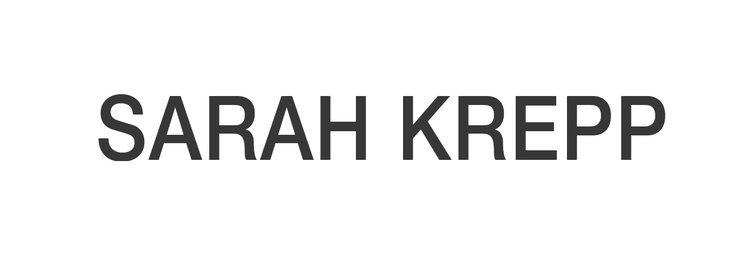Delicious Vice
Sarah Krepp begins with the grid—that is, as viewers, this is what first registers. From there, however, things quickly become disorienting and messy, for against the grid a fulsome play of gestural marks backs up lyrical arabesques sometimes made from highway detritus—specifically torn and sheared rubber tires, and sometimes layers of electrical parts and black and white meandering lines. With much of the recent work, there are rips in the actual canvas, with the hanging scraps turned under and stitched into the structure by its own loose threads. These are holes desecrating the grid—making it more vulnerable and gorgeous. Consistently, one also beholds an array of abstract signs, codes, symbols, charts, text, and games scattered across the all-over field—paraphernalia of the mind embedded within Krepp's ground of haptic stiching and gestural marks. But the grid endures, for it is her foundation—the modernist support, what Rosiland Krauss referred to as the ubiquitous emblem of the Modern era. And then Krepp mucks it up, skillfully. This is her delicious vice, offering a visual cacophony that strikes against the grid, with collaged maps that lead nowhere, warning signs that do not make us safe, board games never played, codes remaining ambiguous, charts that fail to measure, and the facture of the surface that just seduces and seduces. Such a persistent dichotomy of the grid and its opposite, the orderly with the unwieldy, reason and madness, is exactly the metaphor that Krepp has explored successfully in her oeuvre for many years.
Commentators have seen in the artist's work the remnants of trauma. That she watched the unfolding of a severe car crash many years ago must still resonate, like a cold chill, when employing the scraps of demolished automobile tires that appear everywhere in the work and in the small sketches—studies in how art can ennoble the ordinary. Like "primitive" totemism, Krepp can transfer her psychic fear into another thing, exteriorize the trauma through creative form. The catharsis this allows, however, moves well beyond the specific incident, for as viewers (and for the artist herself) we are also moved by the resolved struggle that is suggested through the interplay of disparate patterns in the work. We may not be privy to the precise back-story, but the sheer play of the rational and the irrational is ultimately satisfying. Krepp provides a poetic metaphor for how to accommodate the irregularities of life that so often disrupt the systems we so ardently hope to sustain us.
Krepp weaves together radically different aesthetic and cognitive orientations in a manner that only the imaginative space of art making allows. "The aesthetic state is a pure instance of suspension," writes Jacques Rancière, "a moment when form is experienced for itself...it is the moment of the formation and education of a specific type of humanity." And so we come back to the grid, the infinite sublime that modernism sought to proselytize. And it is surely here in Krepp's work, that is, as deeply contemplative form, but it is constructed from the stuff of life as much as it is suggested through autonomous abstraction. The grid is cracked, deconstructed then adorned. Krepp's paintings are both loud and mute, like the "White Noise" which she titled much of the previous work. Perceptually and conceptually there is much to consider, but the well-crafted density, the sheer all-overness of the "marks" tempers the disturbances and brings infinite harmony to the field, a maximal minimalist thing. Now Krepp titles the series "Blindsighted" a version of the term "blindsight" which the artist recently discovered as the brain's subcortical ability to literally sense things in space—a subconscious vision. Though many languages of knowing are present in Krepp's work—text, code, symbol, etc., it is in the texture of the materials that the mind understands and finds great solace.
Lisa Wainwright Catalogue Essay, 2009

